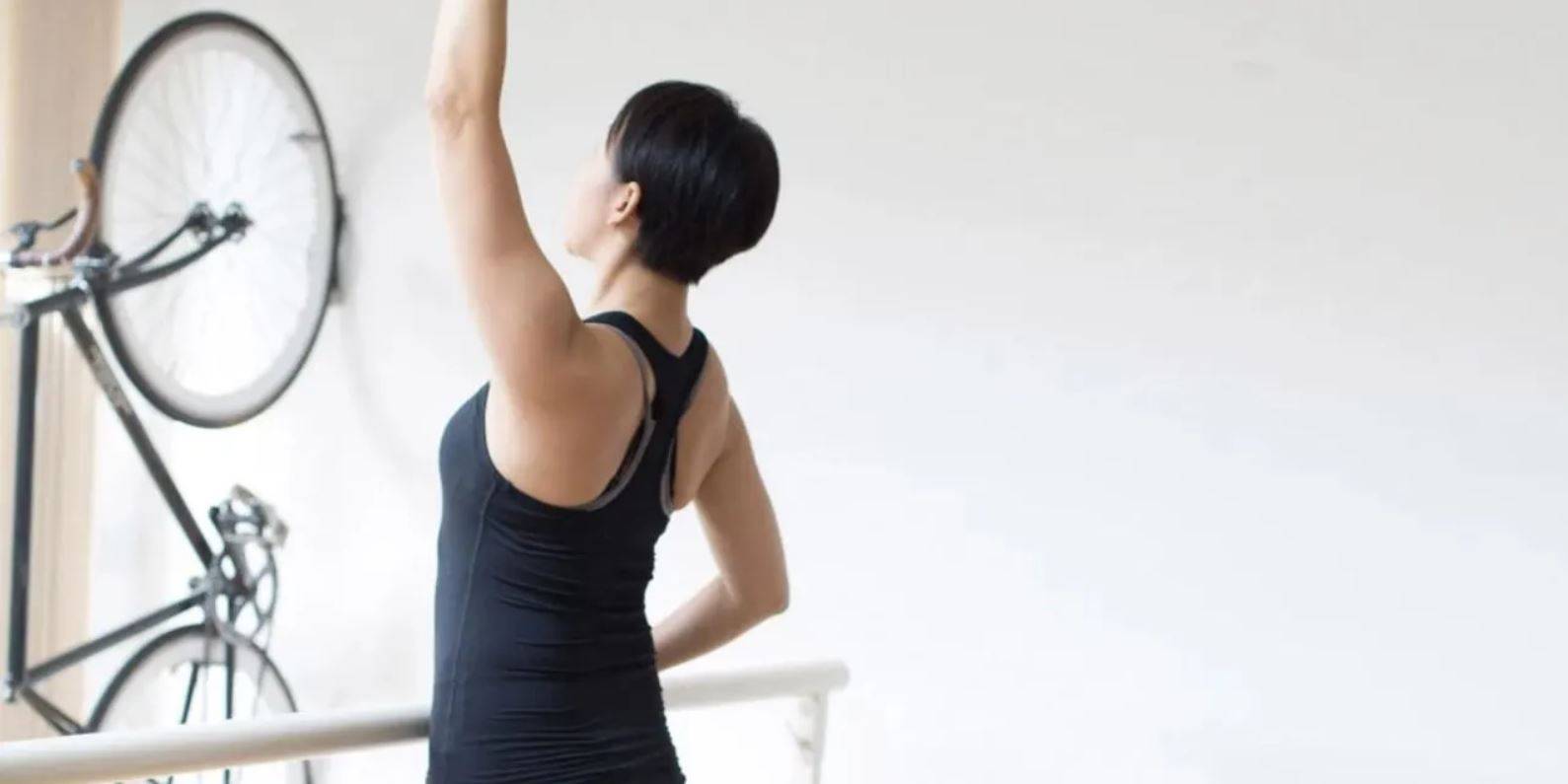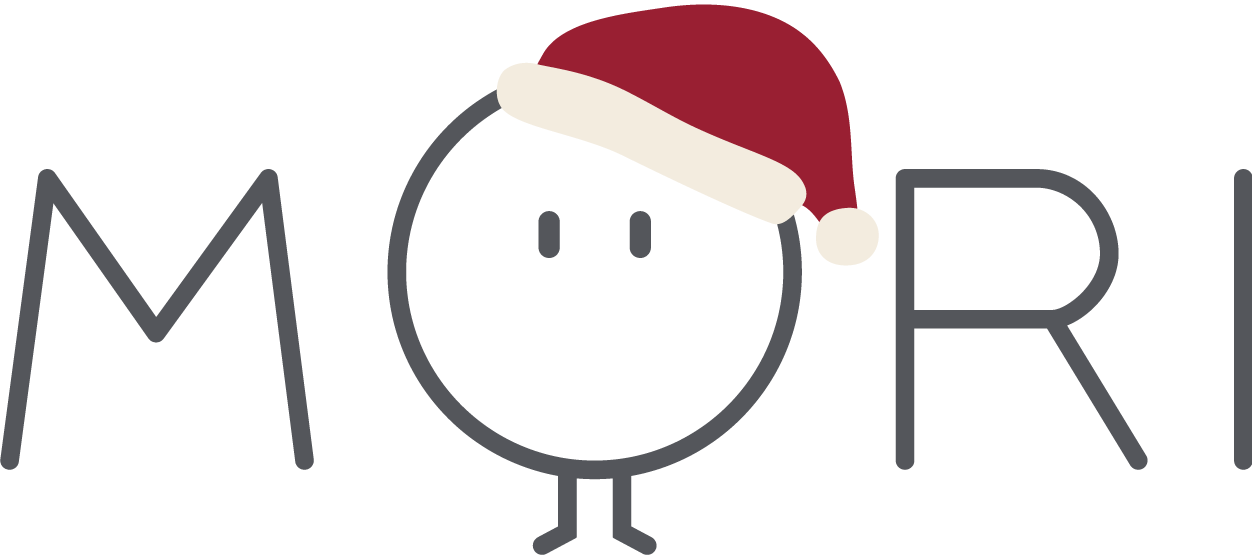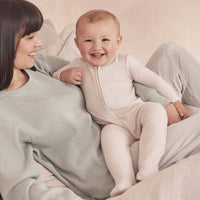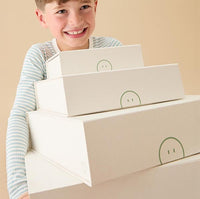Six exercises for your post-baby body

We spoke to Ruby, who is a trained professional in the field of pre/post natal Yoga and Pilates about what exercises are best for women looking to get back into shape after giving birth.
Here are some of my go-to exercises and personal favourites that I’ve used since having children. The good news for all busy mums is that they don’t have to be completed in sequence, as Pilates is very flexible. Personally, I find that they’re the things my body needs on a day-to-day basis so if I have five minutes when I’m not running around the house, I’ll take a moment, take a breath and do them.
These exercises are really helpful for that post-natal period and I think Pilates specifically gives you a really good base after having a child, before you jump back into a full-time exercise programme of any sort.
Fletcher Towelwork
This is very effective in recalibrating your posture after the weight you’ve been carrying through pregnancy, and the hunched posture you gain from breastfeeding and lifting your baby. It also helps to address the hyper-extension of the lumber spine from carrying your child for nine months. This allows you to open your shoulders and realign your spine, which makes you look taller and in turn slimmer too!
Do this movement against a wall to ensure that your spine is working in a neutral position. Watch that your rib cage doesn’t pop. This really helps me to reconnect with the entire body from head to toe.
Fletcher Pilates is a specific method of Pilates movement. Do find a qualified Fletcher teacher if you are interested in finding out more.
Pliés
Standing barre work is a great exercise for my post-natal clients, especially early on if they’re breastfeeding and quite loose due to the pregnancy hormones still in their body. Doing crunches and anything that puts too much pressure in the abdominal area is a bad idea at this stage. Pliés are more subtle and will help you open those hips and find length in your hamstrings. Think long lean body again!
A lot of the standing work at the barre is great because it teaches you to connect and reorganise through your whole body. It works the abdominals in a different way, not by shortening but by creating length in your body. It’s a delicate balance between control and letting go. It’s also great to work those feet, which get neglected and often flatten due to muscle-loosening pregnancy hormones.
Find a reputable barre programme if you can. Beginner ballet is great but be sure to let your teacher know you have just had a baby and possibly still breastfeeding. Watch those joints – technique is very important during this time. Even better if your barre teacher is Pilates and pre-post natal qualified to make sure you get the most out of your session.
Breathing
Breathing is key in just about all forms of exercise as well as some forms of therapy. It’s seems so simple, but most of us don’t breathe very deeply at all. The benefits of learning to breathe deeply and with control are endless. It opens your upper body, engages your abdominals, helps to release tension and delivers oxygen to all the tiny cells your body. It’s a nice all-round way to re-energise your body and you can, of course, do it anywhere.
Visualise your lungs and how they attach inside your ribcage, how they fire the diaphragm, also working to activate your pelvic floor. Breathing is a muscular movement even though we do it sub-consciously. This exercise is about working those muscles with a more specific purpose and keeping them working optimally, even when you’re not thinking about it.
Inhale through the nose, filling up those lungs and depressing the diaphragm, opening the back and front of the shoulders. The ribcage expands front, back and both sides like an umbrella.
Exhale through the mouth and feel your abdominals contract and lengthen from your hips to the bottom ribs. The diaphragm pushes up with a lift of the pelvic floor and the muscles around the ribcage contract.
Pelvic Press
A common one but for very good reason. This is a simple exercise that works to release tension in the hips and pelvis and ease tightness in the lower back.
Find your neutral position when lying on the ground first. The pelvis should be level when you place your hands over. Inhale and soften the belly to tilt your pelvis towards your belly button and exhale to return it to the start position. It’s important not to force it and use your breath to move.
Cat Stretch
This is a go-to for finding my abdominals after pregnancy. It’s also a very good way to start strengthening your shoulder muscles too.
Find a mirror if you can and go into an all fours position sideways to it. Then inhale and just let your belly flop out. Exhale as you draw the belly up without moving the spinal position. Once you have found this, keep the belly drawn in and move into a cat/camel stretch, always returning to that neutral start position. Try to keep fingers spread and don’t lock or hyper extend the elbows. Move with the breath.
Downward Dog
This is a familiar Yoga pose, but it’s a full body exercise, using your hands, shoulders, abdominals, legs and feet. The front and back line of your body need to work together to hold you.
Start in plank position, then fold at the hips and lift them to the ceiling. Your sit bones should feel open and pointing towards where the wall meets the ceiling. You may need to bend those knees to start with to get into this position without tucking the pelvis. This is due to tight hamstrings. Over time they will lengthen. Be patient!
I find this quite a restorative pose as it brings the blood to my head and I’m using my breath to move oxygen and energy around my body. It makes me feel awake and alert.
If I don’t have time to do a full yoga session with a little baby around I’ll do a minimum daily requirement of 15 minutes. Thankfully, the baby normally naps long enough for me to fit it in!
Looking for the perfect gift? Discover our collection of baby gift ideas crafted in our softest organic fabrics.
SHOP GIFTS




